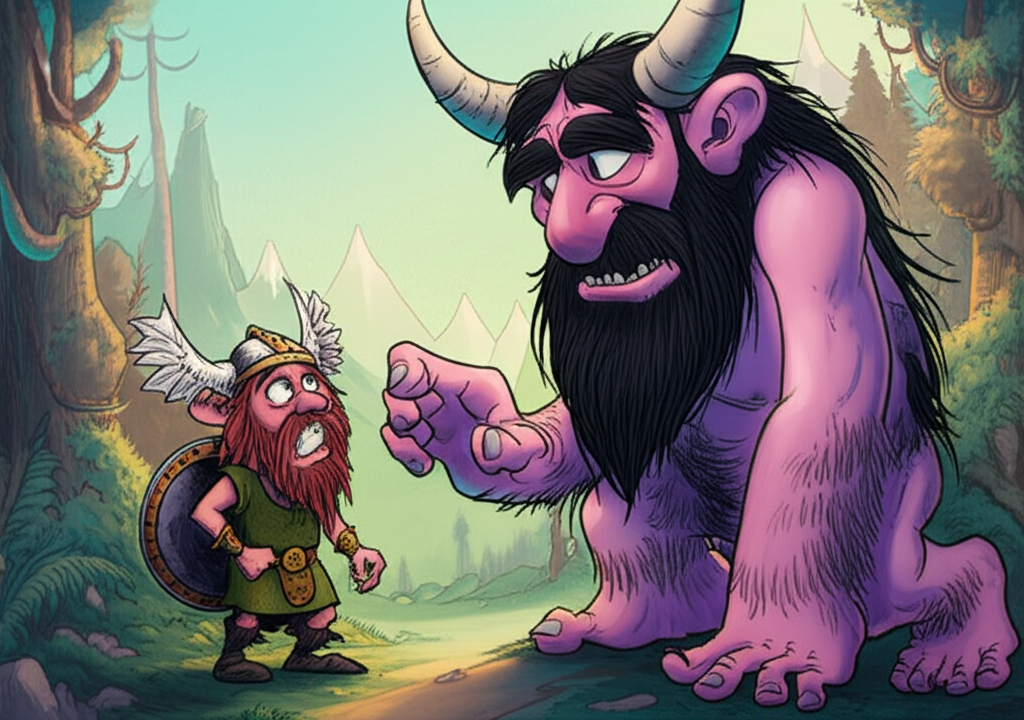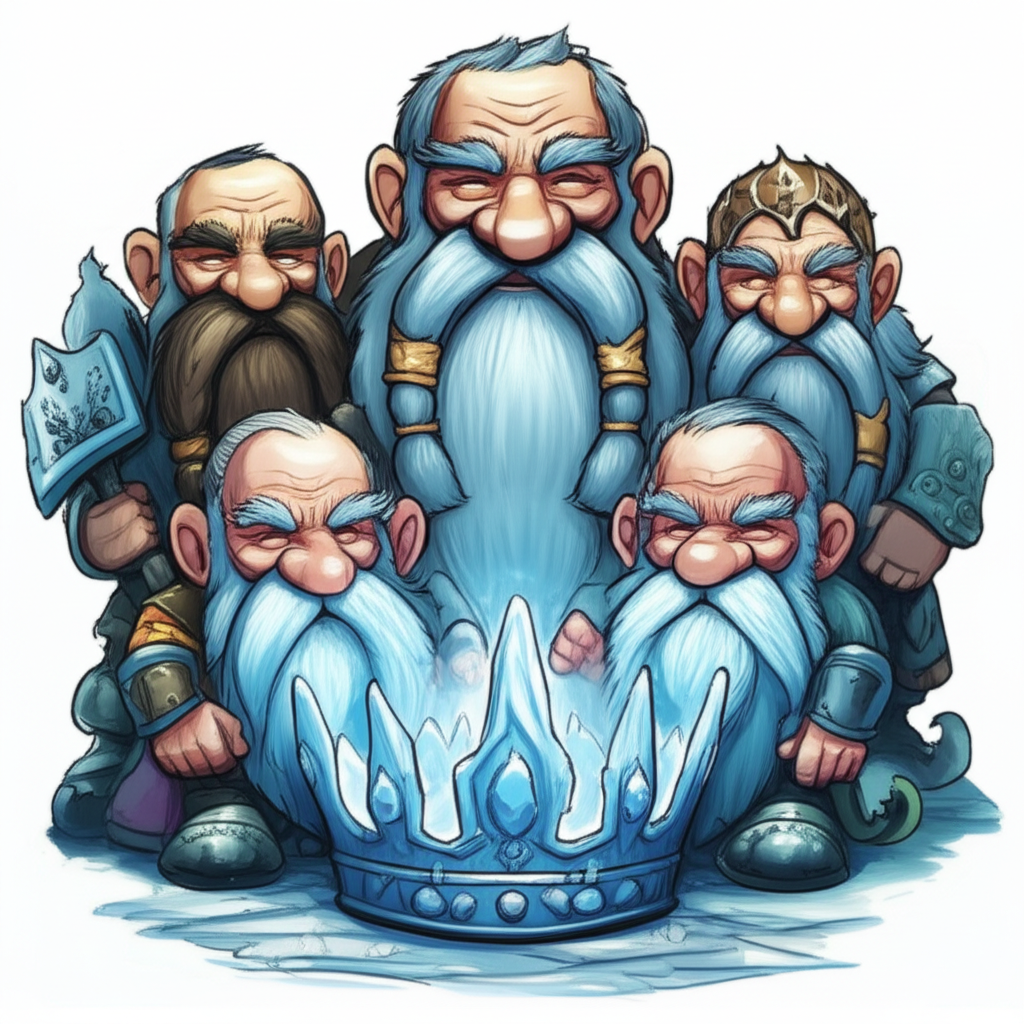
The chill winds that sweep across the stark landscapes of Scandinavia carry with them whispers of ancient tales, stories woven from the very fabric of a people’s relationship with the natural world and their search for meaning. Among these resonant narratives, none perhaps captures the primal forces of creation, conflict, and eventual harmony as vividly as the myth of the Aesir-Vanir War, a story that reverberates through the sagas and poems of the Norse people. It is crucial to understand that these are traditional stories, passed down through generations by ancient peoples, offering a window into their worldview and imaginative understanding of the cosmos, rather than factual accounts or divine pronouncements.
The cultural era that birthed these tales was one of hardy peoples living in close proximity to the formidable forces of nature. The Viking Age, roughly spanning the late 8th to the mid-11th centuries, was a period marked by seafaring, exploration, and a deep respect, bordering on awe, for the untamed elements. The Norse worldview was not one of a singular, all-encompassing divine authority in the way some later religions developed. Instead, their understanding of existence was populated by a pantheon of powerful beings, each embodying different aspects of the world and human experience. They perceived the universe as a dynamic, often chaotic place, where forces of creation and destruction were in constant interplay. Their myths served as a way to explain the inexplicable, to give form to their fears and hopes, and to provide a framework for understanding their place within a vast and often perilous existence. The Aesir-Vanir War, with its divine players and cosmic stakes, was a cornerstone of this rich tapestry of storytelling.
At the heart of this epic conflict stand two distinct, yet ultimately intertwined, pantheons of gods: the Aesir and the Vanir. The Aesir, often depicted as the more martial and authoritative of the two, resided in Asgard, a celestial realm of fortresses and battle halls. They were the gods of war, kingship, wisdom, and the sky. Figures like Odin, the All-Father, a god of wisdom, magic, and war, whose one eye symbolized his insatiable quest for knowledge, and Thor, the mighty god of thunder, his hammer Mjolnir a symbol of protection and destruction, represented this group. Their attributes often mirrored the warrior culture and the need for order and defense within a harsh environment.
In contrast, the Vanir were associated with fertility, prosperity, the sea, and magic. Their realm was Vanaheim, a place of abundance and natural beauty. Freyja, the goddess of love, beauty, fertility, and magic, often depicted with her falcon-feather cloak, and her twin brother Freyr, the god of peace, fertility, and prosperity, who commanded the sun and rain, embodied the Vanir’s connection to the life-giving forces of the earth. Their symbolism lay in the cyclical nature of life, the bounty of the harvest, and the profound, often mystical, powers that sustained existence.
The catalyst for the Aesir-Vanir War, as recounted in the ancient poems and sagas, was not a grand ideological schism, but rather a profound disagreement over the very essence of power and the practice of magic. The Aesir, proud and somewhat rigid in their ways, viewed the Vanir’s potent magic, particularly their mastery of seidr (a form of Norse sorcery often associated with prophecy and manipulation of fate), with suspicion and perhaps a touch of envy. The initial spark of the conflict is often attributed to a quarrel involving the sorceress Gullveig, who, according to some accounts, was sent by the Vanir to Asgard and was so greedily avaricious that the Aesir, in their anger, attempted to burn her three times. Each time, she rose from the ashes, her power undiminished, thus igniting the fury of both divine clans.
The war that ensued was not a prolonged, bloody stalemate in the human sense, but rather a series of fierce clashes and retaliatory raids. The Aesir, with their warrior might, sought to subjugate the Vanir, while the Vanir, with their intricate magic and deep connection to the earth, retaliated with their own formidable powers. Skies were darkened by divine tempests, the earth trembled with the force of their battles, and the very fabric of the cosmos seemed to strain under their conflict. It was a war that threatened to unravel the delicate balance of their mythological world.
Yet, the futility of unending conflict soon became apparent to both sides. The immense power unleashed by their war brought devastation, and the cost of victory seemed too high. This realization, born from the ashes of their battles, led to a pivotal moment: a truce. Instead of continued bloodshed, a treaty was forged, one that involved a remarkable exchange of hostages. The Aesir sent their esteemed members, like Mimir, the wise counselor, and his brother Hoenir, to Vanaheim, while the Vanir offered up their own prominent figures, including Njord, the god of the sea, and his children, Freyr and Freyja, to Asgard. This exchange was not merely a political maneuver; it was a profound act of integration, a recognition that their strengths, when combined, were far greater than their individual might.
The arrival of the Vanir in Asgard marked a new era. Freyja, with her profound knowledge of seidr, shared her magical arts with the Aesir, enriching their understanding of the world and its hidden forces. Freyr brought his blessings of fertility and peace, ensuring the prosperity of Asgard and, by extension, the world. In return, the Aesir offered their own wisdom and strength, fostering a more balanced and resilient divine society. The war, though destructive, ultimately led to a richer, more complete pantheon, where the martial prowess of the Aesir was tempered by the life-affirming magic of the Vanir. The "Songs of Midgard" – the tales and poems that chronicled these events – thus became hymns to survival, adaptation, and the ultimate triumph of cooperation over division.
The symbolism embedded within the Aesir-Vanir War is multifaceted and deeply resonant with the ancient Norse experience. The conflict itself can be seen as a representation of the inherent duality in existence: the forces of order and chaos, creation and destruction, intellect and instinct. The Aesir’s martial strength symbolized the need for structure, defense, and the pursuit of knowledge and power. The Vanir’s connection to fertility and magic represented the life-giving forces of nature, the cyclical rhythm of life, death, and rebirth, and the intuitive understanding of the world’s mysteries. The war’s resolution, through the exchange of hostages and the subsequent integration of the two clans, offered a powerful metaphor for the necessity of embracing and integrating seemingly opposing forces to achieve a greater good. It spoke to the idea that true strength lies not in isolation or dominance, but in understanding, compromise, and the harmonious blending of different strengths. The exchange of Mimir and Hoenir, for instance, highlights the value placed on wisdom and judgment, even when these qualities are intertwined with less understood magical practices.
In the modern world, the legacy of the Aesir-Vanir War continues to resonate, albeit in different forms. The epic narratives of Norse mythology have found fertile ground in contemporary literature, cinema, and gaming. Characters inspired by Odin, Thor, Freyja, and Freyr populate fantasy novels, blockbuster movies, and video games, bringing these ancient deities and their stories to a global audience. In cultural studies, these myths are invaluable for understanding the historical worldview of Germanic peoples, their social structures, their relationship with their environment, and their philosophical inquiries into the nature of power, fate, and the divine. They serve as a rich source for exploring themes of conflict resolution, cultural exchange, and the enduring human need for storytelling to make sense of the world.
In conclusion, the Aesir-Vanir War and the Songs of Midgard are profound cultural narratives, born from the imaginative minds of ancient peoples seeking to comprehend the universe and their place within it. As Muslims, we recognize that only Allah is the true Creator and Sustainer of all existence, the ultimate source of power and wisdom. These ancient stories, however, offer us a fascinating glimpse into the rich tapestry of human heritage, a testament to our innate capacity for storytelling, imagination, and the enduring quest to understand ourselves and the world around us. They remind us that even in tales of conflict, there can be lessons of harmony and the profound beauty of cultural exchange.





